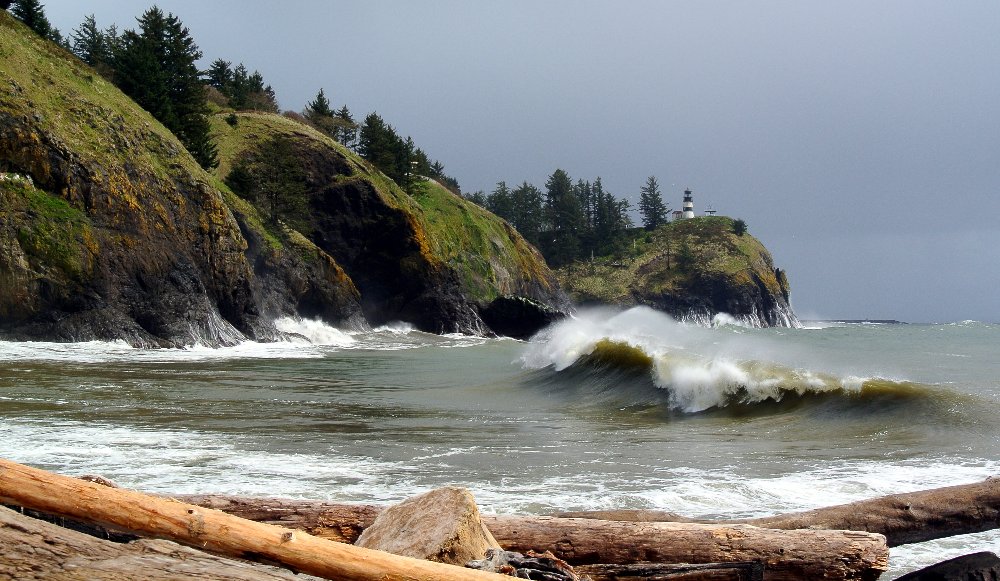What did Lewis and Clark actually see in the Pacific Northwest in 1805?
Historian Stewart Holbrook has written that the headwaters of a river suggest something of the mystery of Genesis. The immense Columbia River takes on that mantle, with hamlets, vistas, and natural monuments that spring from pages of the Bible, and they glow in the Journals of Thomas Jefferson’s famous exploratory team, headed by Meriwether Lewis and William Clark.
After leaving the confluence of the Snake and Columbia Rivers in October 1805, near today’s Pasco, Washington, the intrepid explorers marveled at “the number of dead salmon on the shores and floating in the river.” Lewis & Clark then drifted past the still-standing stone monuments at the narrowly dramatic Wallula Gap. The nearby Horse Heaven hills (today a plethora of vineyards), many of the original islands, cliffs, and huge shore boulders remain as they were seen by Lewis & Clark.
Although Celilo Falls has been inundated by The Dalles dam built in 1957, a nearby park and monument capture scenes of Native fishing at wild, precarious rapids that were challenged by the explorers’ party.
The twisting highway on the Washington state side offers Samuel Hill’s Maryhill Museum and a latter-day Stonehenge. From the wind-swept promontories that support these lonely attractions, visitors gaze on timeless topographical features.
Clark noted on November 4, 1805, “a full view of Mt. Helien’s” (today’s Mt. St. Helens), which he surmised might be the highest peak in North America. Of course, neighboring Mt. Rainier is higher and poor Mt. St. Helens blew her top many years ago.
Rain and more rain fell on the 1805 travelers, and that familiar precipitation followed them to the sea. On November 7 the 30-person Lewis & Clark party camped at Pillar Rock, near today’s town of Cathlamet, and excitedly exclaimed that they could see and hear the Pacific Ocean waves breaking the shore. That was a false alarm, since the Pacific cannot be seen or heard from this point, but a visitor should stop here and listen carefully. Something might cause our senses to experience the nearness of a great salt sea meeting an enormous wild river.
Through the winter rains Lewis & Clark saw rocks, great cliffs, and sandy shores at Cape Disappointment. After a two-week reconnaissance, the bedraggled party paddled across the river mouth and established winter headquarters at Fort Clatsop, which has been reconstructed to aid the imagination.
Discover more from Post Alley
Subscribe to get the latest posts sent to your email.

Such a delicious description of where we were in Lewis and Clark time. The dams have changed much of that, but it is good to recall where we were in 1805.
What fine writing this is. You know, of course, the Shoshone tribe gave Lewis + Clark horses when they needed them. Just shared them.
And until recently, it was still possible to view horse trails and horse-and-wagon tracks used by Indian and pioneer travelers in Oregon and Washington, such as the Klickitat raiding trail. I have no idea if they still exist.
You can still discern traces of the old Indian Racetrack in a meadow, somewhere in the Gifford Pinchot National Forest.. you can even hike there, according to the USDA website, though the mosquitoes are terrible.
All of which makes me wish we had something as ancient and fundamentally durable as a horse and wagon. The wagon tracks used in ancient Pompeii are still visible, embedded in concrete now, but even so–isn’t it wonderful that they’re still there!
And, it’s now possible to be buried, “green “ in beautiful woodlands at White Eagle Memorial Preserve at Ekone Ranch, north of the Columbia Gorge.
I too loved reading your description here. It makes me want to follow the path you have described. However I will do it in Spring even it does not fully replicate the rainy journey that Lewis and Clark experienced at the end of their amazing trip.